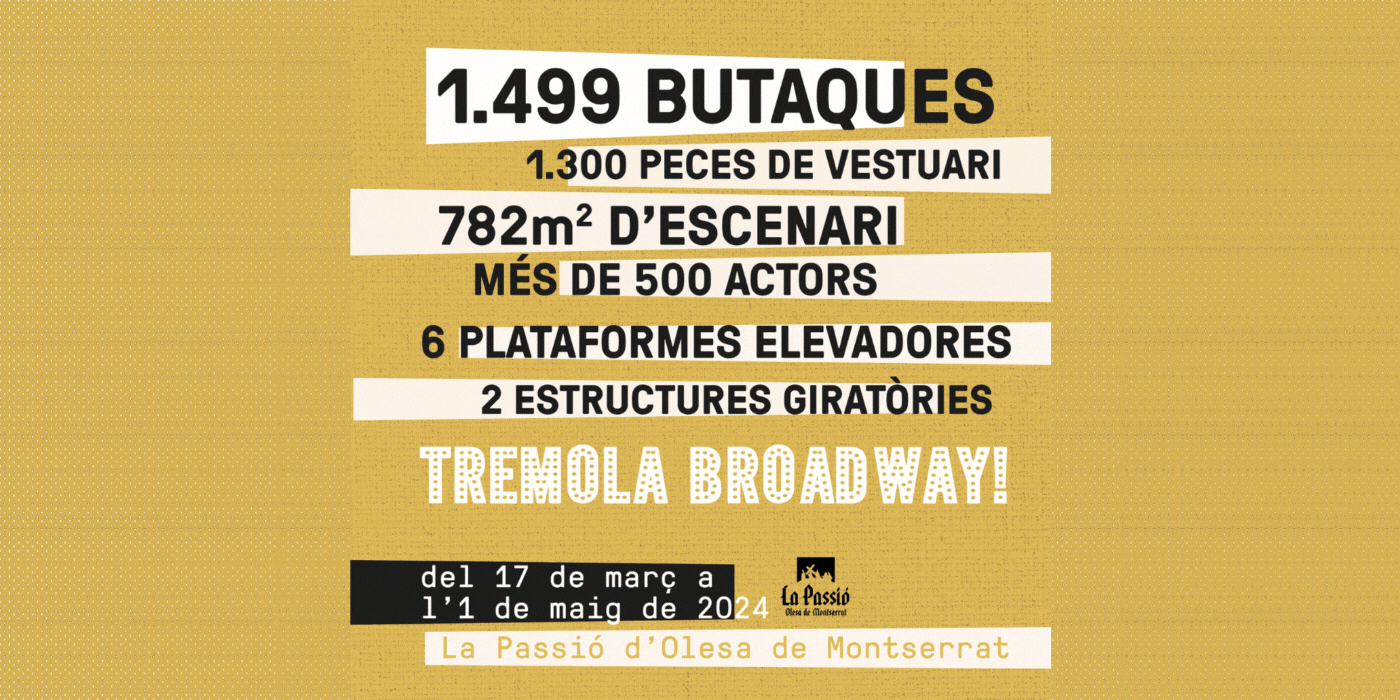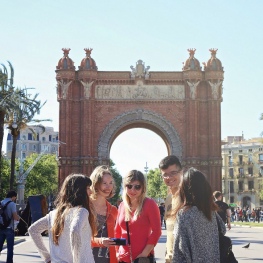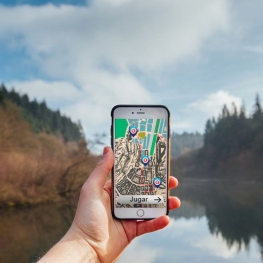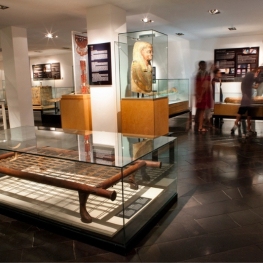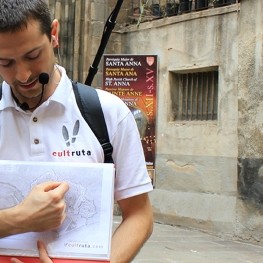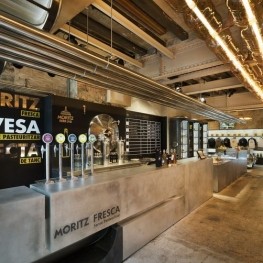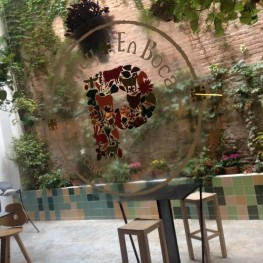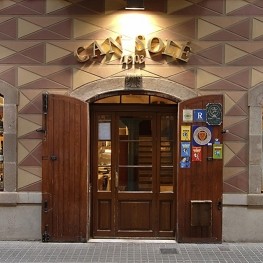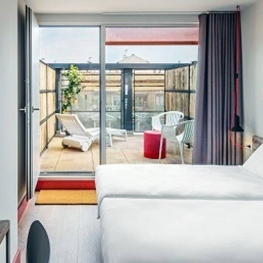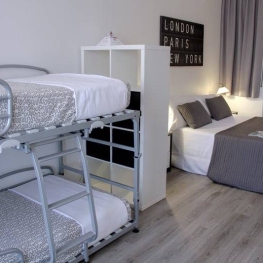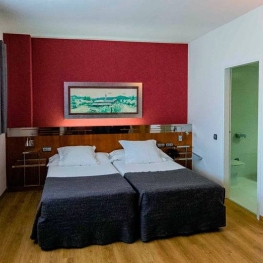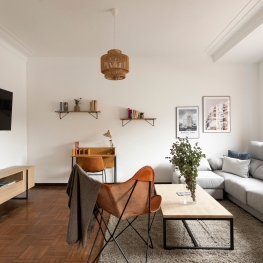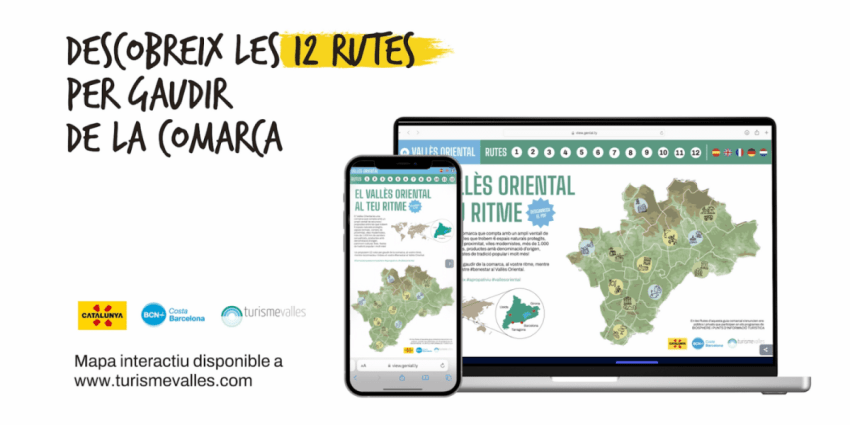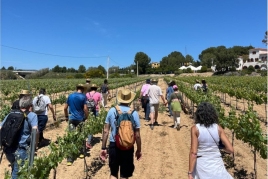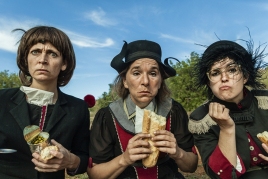Barcelona 1939. The dark night in Barcelona
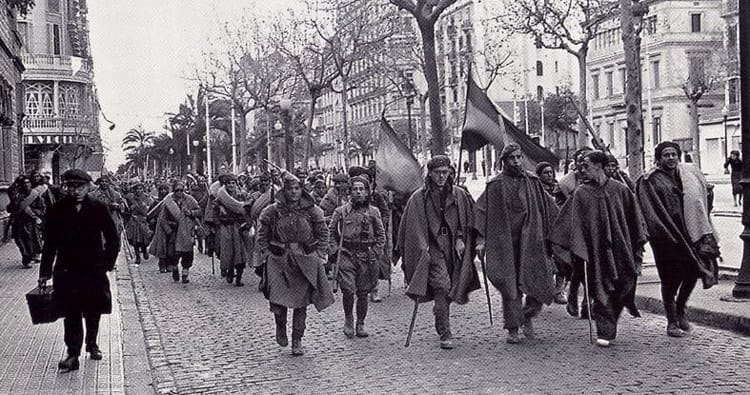
The January 26, 1939 about 90,000 soldiers of Franco's army entered Barcelona and occupied the city, exhausted and defeated after three years of war, with the explicit order of 'beat and destroy the enemy.
While the national troops took possession of its objectives, the command Franco appointed Brigadier General Eliseo Álvarez Arenas as head of the headquarters Services Occupation (SdO). Was this an outstanding management system - applied only to Barcelona - which subordinated the civil, military and municipal governments the authority of Álvarez Arenas.
A gigantic repressive machinery was set in motion to punish, in many cases run, and intimidate dissent and separatist considered a red city. Repressive fascist madness became churches, convents, charitable halls, factories and garages for spaces of torture and imprisonment .
femTurisme.cat ExploradorsUrbans and invite you to discover some of the spaces that retain the memory of that shame as a tribute to all the freedom fighters.
Palau Robert. Paseo de Gracia, 107. (Headquarters Services Occupation).
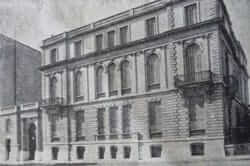 This property on the corner of Paseo de Gracia and Diagonal Avenue is a neoclassical building, built in 1903, which was the private residence of Robert Robert i Surís, an important businessman and politician of the time.
This property on the corner of Paseo de Gracia and Diagonal Avenue is a neoclassical building, built in 1903, which was the private residence of Robert Robert i Surís, an important businessman and politician of the time.
With the occupation of Barcelona , the building was requisitioned by Franco to host Services Occupation. From this head the repressive control over the city policy is organized, the issue of safe conduct necessary for the movement of the population and management everyday. In 1940, Palau reverted to their owners.
Today, the Palau Robert hosts the Centre d'Informació de Catalunya and temporary exhibitions are also made. Worth a visit are highly recommended and its gardens, a small oasis in the noise of one of the busiest areas of the city.
Households Mundet. Paseo Vall d'Hebron, 185. (Concentration camp Horta)
Today is a stroll through the grounds of the Mundet Homes and enjoy its landscape and heritage assets delight, such as the Palacio de les Heures (residence of President Companys during the Civil War.) But amid this bucolic atmosphere must also remember that one of the buildings of the Mundet Household Llevant Pavilion which now houses the Faculty of Education, University of Barcelona, ??was also from February 1939 Concentration Camp Horta.
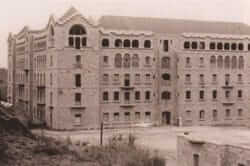 The construction of the pavilion Llevant goes back some years ago. In 1928 the board of the House of Charity (Barcelona welfare institution created in the late eighteenth century) decided to expand its facilities and build new homes in the district of Horta. In 1936, with the flag of Llevant flag and finished basement Ponent, the works are paralyzed by the start of the war.
The construction of the pavilion Llevant goes back some years ago. In 1928 the board of the House of Charity (Barcelona welfare institution created in the late eighteenth century) decided to expand its facilities and build new homes in the district of Horta. In 1936, with the flag of Llevant flag and finished basement Ponent, the works are paralyzed by the start of the war.
Today it is impossible to believe, but then this area was surrounded by wire and checkpoints and basements put up the most cruel tortures.
In Barcelona there were two more fields and missing concentration: les Missions Palace in Montjuïc and Cànem in Poblenou, a former factory of brothers Godo.
Churches and convents as detention centers
The magnitude of the repression caused the Political Information Military Service (CPIS) of the dictatorship will enable a number of detention centers that operated own regardless of the prison system, which at that time included only the Model Prison.
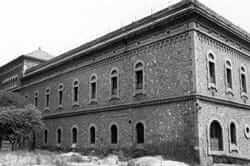 These include the centers own convent of St. Elias (in the basement of the convent of the Poor Clares of Jerusalem where today there is only the little chapel of St. Agnes) or old Czech in Vallmajor Street Church, 29. Witnesses who passed through here described Vallmajor as' the crime files' or 'hatred officials. "We we can get an idea of how it would be the effectiveness of the executioners in this Czech that even the Nazi Heinrich Himmler, head of the SS , visited in 1940 fascinated by what she had talked about.
These include the centers own convent of St. Elias (in the basement of the convent of the Poor Clares of Jerusalem where today there is only the little chapel of St. Agnes) or old Czech in Vallmajor Street Church, 29. Witnesses who passed through here described Vallmajor as' the crime files' or 'hatred officials. "We we can get an idea of how it would be the effectiveness of the executioners in this Czech that even the Nazi Heinrich Himmler, head of the SS , visited in 1940 fascinated by what she had talked about.
Vallmajor and St. Elias are two examples, but there were many other detention centers, starting with the model, but also including garages or street Balmes Mallorca, Tamarita (at the end of the street Balmes), the convent of San Juan ( Gracia), the headquarters of SIPM (Balmes Street), buildings on the road Sants Rossello Bonanova ride in the street Copèrnic ...
Church of San Pedro Nolasco. Plaza Castilla, 6. (Military Hospital)
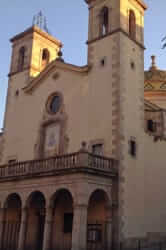 This church is the Plaza Castilla inner chapel of a former convent of the Order of San Vincente de Paül erected in the eighteenth century in this area. Today the parish is dedicated to the cult of San Severo and San Carlos Borromeo but the occupation of Barcelona after the war, the building developed functions of Military Hospital. Indeed, it was one of the five major military hospitals that operated during the dictatorship Franco (other three were they located in the Basque Country and one in Madrid) to detain prisoners of war there, mainly from the labor battalions.
This church is the Plaza Castilla inner chapel of a former convent of the Order of San Vincente de Paül erected in the eighteenth century in this area. Today the parish is dedicated to the cult of San Severo and San Carlos Borromeo but the occupation of Barcelona after the war, the building developed functions of Military Hospital. Indeed, it was one of the five major military hospitals that operated during the dictatorship Franco (other three were they located in the Basque Country and one in Madrid) to detain prisoners of war there, mainly from the labor battalions.
The hospital operated until 1942, when it launched the hospital Vallcarca Avenue.
Cemetery of Sant Andreu, the 'Pantheon Soldier'.
We talked before the labor battalions, whose objective was to perform reconstruction of damaged infrastructure following the civil war. There is evidence of the existence in Barcelona four battalions of workers trained together for about 320 prisoners. These units were responsible for different tasks among which one that exemplifies the strong will of the Franco punishment against those considered disaffected.
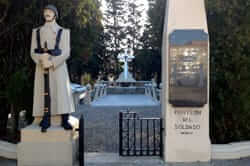 In 1940, one of the battalions of workers had to build Cemetery Sant Andreu a funeral vault still exists and that once served to bury Franco's soldiers to be buried without sufficient resources. This cemetery is a small pentagonal garden accessed after crossing the statue of a soldier armed with a rifle. In the background, the altar with cross and on a lower floor, niches with police and soldiers buried. Today, completely eliminated the fascist symbolism exhibited in his day, the monument exudes a kitsch aesthetic worth visiting.
In 1940, one of the battalions of workers had to build Cemetery Sant Andreu a funeral vault still exists and that once served to bury Franco's soldiers to be buried without sufficient resources. This cemetery is a small pentagonal garden accessed after crossing the statue of a soldier armed with a rifle. In the background, the altar with cross and on a lower floor, niches with police and soldiers buried. Today, completely eliminated the fascist symbolism exhibited in his day, the monument exudes a kitsch aesthetic worth visiting.
In his day, according to the press at the time, the placement of the first stone met the Consul of Italy a century of Falange, young Hitler Youth a hierarch of the Nazi party in Spain and Carlos Trias, on behalf of the Chief Provincial Movement.
The Bloc House Torras i Bages Ride
Without leaving Sant Andreu is also advisable to visit Casa Bloc, an example of how new Francoist authorities wanted to erase any trace of modern and advanced in some areas the Republic had driven policies.
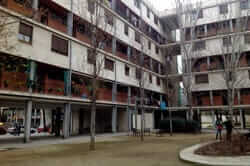 The building is 5 blocks of flats which promoted the Republican Government in 1933 to dignify the lives of workers by providing housing with some notable hygiene and sanitation. Building Casa Bloc, led by architects Josep Lluís Sert, Josep and Joan Baptista Torres Clave Subirana, was interrupted in 1938 because of the outbreak of the Civil War although three of the five blocks of the complex were already finished.
The building is 5 blocks of flats which promoted the Republican Government in 1933 to dignify the lives of workers by providing housing with some notable hygiene and sanitation. Building Casa Bloc, led by architects Josep Lluís Sert, Josep and Joan Baptista Torres Clave Subirana, was interrupted in 1938 because of the outbreak of the Civil War although three of the five blocks of the complex were already finished.
The developers designed a duplex dwellings could have up to 4 bedrooms, all exterior to ensure ventilation, with spaces to build community library, school and consumer cooperative, and even elevators. The war stopped that experiment because the Francoist Barcelona Provincial Council, which took over ownership of the building, decided to allocate the houses to military widows, orphans and relatives of the national police.
Today one of these homes, part of the exhibition spaces of the Design Museum, you can visit. Reservation must be made ??in the same Design Museum.
The Camp de la Bota and Fossar Pedrera
The tour also passes through these spaces the portion of land occupied by the coastal strip between the current grounds of the Forum of Cultures and the mouth of the river Besòs, where the Boot Camp was. Besides synonymous with suburban slums during decades of the 50s and 60s, this beach also evokes the brutal and bloody repression Franco once the Civil War ended (sculpture 'Fraternity' by Miquel Navarro, testifies).
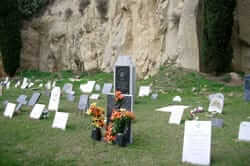 Since 1939 and until 1952 the Boot Camp was a stage where performances were made, about 1,700 according to the most reputable historical sources. The firing squad proceeded to shoot prisoners against a wall or parapet about three meters high and 40 wore long diagonal to the beach. Typically, the condemned were executed at dawn or at dawn and most bodies were taken to the cemetery of La Pedrera, in Montjuïc.
Since 1939 and until 1952 the Boot Camp was a stage where performances were made, about 1,700 according to the most reputable historical sources. The firing squad proceeded to shoot prisoners against a wall or parapet about three meters high and 40 wore long diagonal to the beach. Typically, the condemned were executed at dawn or at dawn and most bodies were taken to the cemetery of La Pedrera, in Montjuïc.
There we finished the tour with a visit to the tomb of the President of the Generalitat Lluis Companys was executed at Montjuïc Castle on October 15, 1940. His remains and those of about 4,000 repressed by fascism also rest in the ditch, witness the brutality of the dictatorship.
You may also be interested in: The Civil War, exile and repression in Catalonia
What to do
Gimcanes GeoCats
BarcelonaDiscover Barcelona through GeoCats in the most comfortable and fun way possible!…
Gymkana Digital Turística
BarcelonaTourist and cultural routes in gymkana mode. Completely free and without downloading…
Museu Egipci de Barcelona
Barcelona (a 1.6 Km)The Egyptian Museum of Barcelona is one of the most important private…
CultRuta, Rutes per Barcelona
BarcelonaThematic cultural routes of about two hours, to discover Barcelona in depth:…
Where to eat
Fàbrica Moritz Barcelona
Barcelona (a 1.3 Km)The Moritz Barcelona Factory is a unique space, divided into three floors,…
Restaurant Windsor
Barcelona (a 2.2 Km)The Windsor restaurant, located in Barcelona, is a benchmark of contemporary Catalan…
Where to sleep
Generator Barcelona
Barcelona (a 2.2 Km)Barcelona generator is a high-design hostel whose decor displays a mix of…
Aparhotel Atenea Calabria
Barcelona (a 2.1 Km)The Calabria apartments offer a stunning location in the Eixample district of…
Aparhotel Atenea Barcelona
Barcelona (a 4.1 Km)In the Diagonal, in the heart of the commercial, financial and business…
AB Apartment Barcelona
Barcelona (a 1.5 Km)AB Apartment Barcelona is a rental agency for short and long term…

